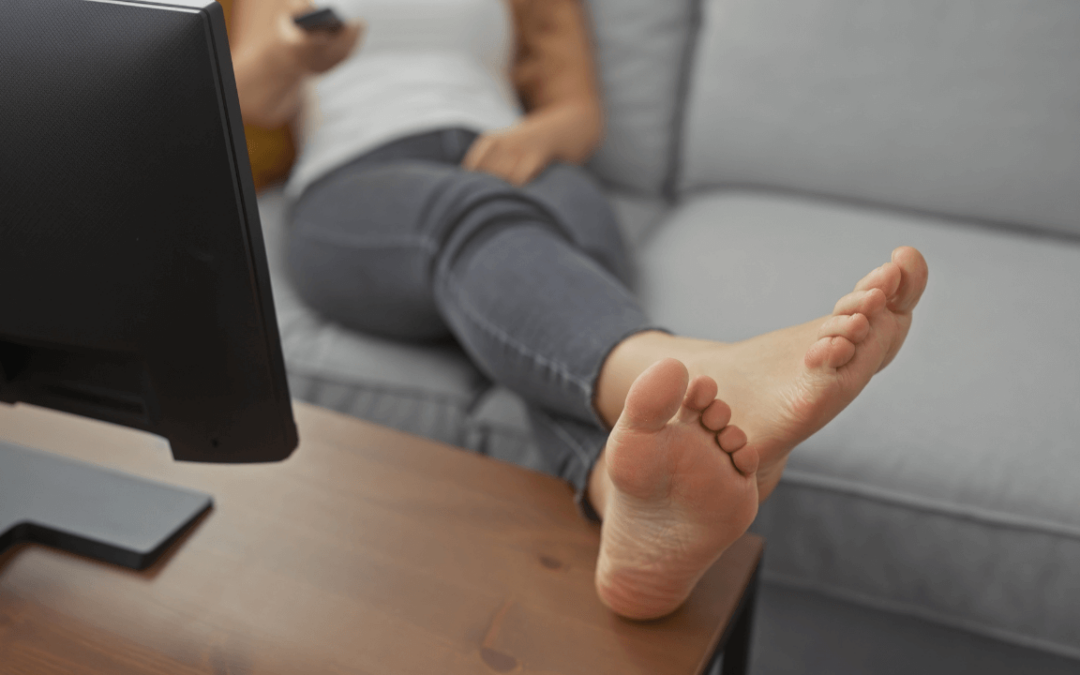The end of the year is a good time to look ahead and set new goals.
A good first step is taking a look at the world around you and separating the things you can control from the things you can’t.
(The latter will probably make up a much longer list than you wanted to see. Let’s just push that aside.)
Of the things you can control, one of the most popular involves becoming more active: joining a gym, breaking a new personal record, or even just venturing into a new sport or discipline.
If you have a resolution that’s on the physical side, it will pay big dividends to make a few resolutions for your foot health as well. The better you treat your feet and ankles in your pursuits, the lower your risks of stalling your goals with a painful sports injury!
But “No Pain, No Gain!” …Er, Right?
The excitement of a new goal can cause people to immediately dive into it with everything they’ve got. But when it comes to sports injuries, this gusto can be a recipe for disaster!
Injuries like sprains and fractures can happen from impacts and falls, but a much more preventable form of injury comes from overuse. Your focus should be on preventing these as you slide into your fitness resolutions.
Our bodies must condition themselves to take on greater demands and stresses. We achieve this by essentially breaking our bodies down at microscopic levels so they can rebuild themselves stronger. That’s how we build muscle mass, bone strength, and endurance.
However, if we push our bodies too hard all at once or don’t provide ourselves enough time to rebuild and recover, the stresses can become too much and the pain will begin. Achilles tendinitis, plantar fasciitis, stress fractures, and other sports injuries can all develop as a result of overuse.
In other cases, the extra stress may not be intentional, but rather the result of an abnormal foot structure or gait placing excess pressure on certain parts of the foot and ankle.
Keeping all this in mind, here are some important “side resolutions” to work alongside your active goals.
#1: Equip Your Feet Correctly
This can be a fun resolution since it gives you an excuse to buy new shoes!
Whatever activity you wish to engage more in—running, basketball, soccer, tennis, etc.—ensure that you have shoes that are made specifically for doing so.
Athletic shoes are designed to better accommodate the demands of that sport. Basketball shoes, for example, can add more support to the ankle for quick turns and pivots. Tennis shoes are built to support more lateral motions.
Not only consider what sport your shoe is made for, but potentially different positions and needs in that sport, as well. The shape of your foot and how you walk are also very important factors to consider.
A trained associate at a good sporting store will be able to help you make the right choices both for the sport and how you walk, so don’t be afraid to use them!
#2: Plan Out Your Escalation
Self-improvement is the name of the game, but jumping the gun and going all out right off the bat is not wise.
Setting yourself some realistic first expectations, then gradually raising them over time is going to give your body the time and acclimation it needs to build itself up in a much safer manner. This goes especially for your feet, which are likely pounding grass or pavement quite a bit!
A good rule of thumb for raising the intensity of your workouts is to increase no more than 10 percent each week. If you are running, you could choose to add 10 percent more distance or 10 percent more time. If working with weights, you could add 10 percent more weight.
However, keep in mind that 10 percent is a suggestion. Plan your intensity out in advance. But, if you do not feel comfortable adding that much, or do not feel your body could handle it well, do not hesitate to ratchet down a planned increase. Listening to your body is key to avoiding injury.
#3: Warm Up and Cool Down
The more your body is prepared for bursts of energy, the less likely you will endure an injury.
Warming up before any bout of intense or extended activity is crucial, and the way you warm up should depend on your planned activities and your individual needs.
If you have tight calf muscles for instance, stretches involving the Achilles tendon (such as heel raises) are a good move. If you are running, you will want to do a bit of light jogging, as well. Not every part of a warm-up must be done sitting or standing still.
If you would like help determining the best forms of warm-ups and cool-downs for your needs, consult with us or a professional trainer.
#4: Address Existing or New Foot Problems ASAP!
If you have heel pain, ankle pain, or other problems that are currently impeding your progress, don’t wait on them any longer. Get them treated ASAP!
In many cases, effective solutions for these problems, such as custom orthotics, are going to be a great help in preventing your pain and other problems from developing into the new year as well.
And if you are pursuing your goals in the new year and run into a problem that doesn’t improve after a few days, don’t delay in contacting us for help. The sooner a problem is addressed, the sooner you can get back to full strength and the less likely that problem will turn into something chronic!
Make sure you are fully prepared to pursue your goals through the new year and beyond. Give us a call at (214) 660-0777 or fill out our online contact form to get in touch.




